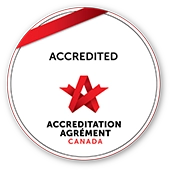Substance abuse in the workplace is increasing in popularity, causing employers to lose precious money. A substance-dependent employee won’t operate optimally, affecting the company’s productivity. Your duty as an employer is to notice and manage substance abuse in the workplace before an employee does damage to themselves and the company.
The damage to themself can come in the form of physical and mental side effects of long-term drug abuse. For a company, substance abuse in the workplace means lost productivity.
According to the Human Resources Director’s 2023 report, the productivity cost lost due to substance use is around $22.4 billion. That means that each substance-dependent employee costs their employer more than $500 yearly.
There are numerous intervention programs from the Canadian government trying to solve the substance use dependence in the country. But, it’s your mission as an employer to build a workplace free of employees with substance abuse.
Keep reading this employer’s guide to workplace drug abuse and learn how you can manage it.
Understanding the Signs of Substance Abuse in the Workplace
Here are signs of substance abuse in the workplace;
Occasional Absences and Late Resumption
One of the first subtle signs of drug abuse is absenteeism. An employee with a substance abuse disorder is more likely to find excuses to stay home more.
According to the National Safety Council, employees with substance use disorders are always absent for five weeks annually. That’s two weeks more than the average employee.
As such, if you notice an employee is always absent or running late to work, there’s a problem. This sign isn’t a confirmation, but if you dig deeper, the employee may abuse certain substances.
Triggered Emotions and Behavioural Changes
The psychological effects of substance abuse will cause an employee to exhibit new behaviours.
First, they become uninterested in anything aside from doing their job as quickly as possible. So, it’s easy to trigger their angry side with little to no effort.
In addition, the employee may lose focus on the job, hallucinate, or even sleep more at work.
Physical Changes
Substance abuse will always have a physical effect on the user. This change is one of the signs you can use to confirm substance abuse in the workplace.
A drug-dependent employee loses interest in self-care and good looks. As such, you may notice the following signs;
- Rough and dirty clothes
- Rough haircuts
- Bad breath
- Dilated pupils
- Red eyes
- Shaky hands
- Frequent restroom visits
- Very cold palms.
- Body odor. Usually, they smell like the substance they’ve been abusing.
- Incoherent speeches
- Imbalance in stance and posture. A good instance is when an employee struggles to stand up without holding anything.
If your employee shows one or more of these signs, there may be a drug problem.

Low Mental Performance and Reduced Productivity
The physical and psychological effects of substance abuse will affect an employee’s productivity. They lose interest in doing their jobs and would instead shift responsibilities to lower-ranked employees.
In addition, the brains aren’t functioning optimally, which causes them to miss important details when carrying out tasks.
Urgent Monetary Needs
The easiest way to confirm workplace drug abuse is when an employee needs money all the time. Alcohol, drugs, and other substances are usually expensive. So, this expense will take a substantial financial hit on the employee.
As such, they’ll always need more money to fuel their substance addiction. Employees like this will always clamour for salary increases, borrow, and sometimes go into theft for cash.
Related Article: The Psychology Behind Functioning Alcoholism: Understanding the Mindset
Substance Abuse Intervention and Communication Strategies for Employers
Substance abuse in the workplace requires a delicate approach from an employer. Because it causes money loss, your impulsive instinct may be to sack affected employees.
However, substance dependence is a disability — according to the Canadian Human Rights Act.
This means you can’t sack an employee solely because of their drug dependence and its effects — despite losing money. In fact, the employer must accommodate the affected employee, as per their human rights.
Here are some excellent strategies you can employ when you notice signs of drug abuse in the workplace.
Confirm before Communicating
Watching an employee independently for substance abuse is good for confidentiality. It’s even better if you document these signs. But, it would be best to have a second confirmation before approaching the employee.
An employee may have a hard time at home or with family. Certain challenges may cause your employees to exhibit some behaviours. As such, assuming from one point of view may be unfair.
Get another employee to observe the employee based on the signs discussed above. It’s always better to do this because the employee can relate better and notice other subtle signs. Your human resource personnel are usually the ideal employees to choose for this task.
Speak to An Expert First
You need expert advice before approaching the employee about their substance abuse. Except you’re an addiction expert, speaking with a person with an addiction is never an easy task. They tend to shy away from the main question and manipulate themselves out of the interview.
You can also turn to drug rehab programs in Toronto for consultation and expert help. They’ll likely ask for details about your company’s services and the job descriptions of the affected employees. An expert will explain the appropriate approach to communicating with the affected employee.
One-on-one Communication with Employee
Confidentiality is vital when tackling substance abuse in the workplace. Don’t approach the employee in the presence of other employees. Instead, call them privately and discuss your concerns with them.
Here are a few tips on communicating with a substance-dependent employee:
-
- Allow room for expression: The best method to help an employee with drug abuse is to know the root cause. You’ll have to listen a lot more while speaking with them. You’ll easily trace why they use the substance and understand where you can help.
- Maintain empathy: Substance dependence is a disability. As such, you must communicate from a place of care for the affected individual.
- Expect denial: Your employee will most likely deny any substance abuse based on your position as their employer. That’s why you must document these signs in full detail. If they’re still in denial, you can carry out a test.
- Explain the Implications: It’s also good to educate the employee about the impact of substance abuse in the workplace. Also, please explain why you may need to move them from sections where employees are prone to injuries for their safety.
- Offer help: Let the employee know that their addiction is a disease they can’t handle. Alongside, offer them support to take care of their health with experts.

Drug Abuse: Creating a Supportive Workplace Environment
An employee may depend on a specific substance because of their job. Toxic work environments and high-level stressful jobs may push employees to rely on substances like opioids to relieve pain.
For example, substance abuse in the workplace is more common among Canadian trade workers than in other jobs. This job description is stressful and comes with physical discomfort. As such, they depend on substances to cope with pain.
Let’s examine how you can create a supportive work environment that curbs substance abuse;
Set Clear Rules Regarding Substance Abuse
Setting a workplace drug abuse policy is crucial to making the workplace free of substance dependence. These policies must be clear and concise — covering all necessary details.
You can involve certain employees in the formation process of these policies. Employees love inclusion and will help enforce this policy since they were part of its creation.
A standard substance abuse policy should have the following features:
- Clear definition of substance abuse
- Aim of the policy
- Prohibited substances in the workplace
- Employees affected by the policy
- Role of line managers and supervisors in implementing the policy.
- Drug tests, if necessary
- Consequences of not following the policy
Educate Employees on the Importance of These Rules
The ideal way to launch a new policy is to organize training and sensitization about it. This training shouldn’t be a one-time event— all employees, including supervisors and HR managers, must attend.
First, you’ll want to explain the policy’s reasons and importance to the workplace. Show the employees how this policy is crucial to making the workplace safe and conducive.
After that, you should discuss the policy in detail. Explain each sentence clearly and ensure the employees understand it.
The next step is explaining the signs of substance use disorder at work. You can subtly chip in a reward program for employees who can spot these signs early. Doing this will give a shared sense of responsibility.
In addition, go over the consequences of substance abuse in the workplace — per the policy.
Train Managers on Signs of Substance Abuse and Intervention Strategies
As an employer, you can’t be aware of every ongoing activity in your organization. Your supervisors and line managers are handling the company’s main activities.
These supervisors will be your company’s enforcement officers. You’ll have to train them to understand and enforce the drug abuse policy properly.
Alongside, the supervisors have to learn about the signs of drug abuse in the workplace. As such, they can notice when any team member is becoming dependent on any drug.
Create a Plan for Addiction Emergency Treatment
To show full support for a drug-free workplace, you may want to create an emergency treatment plan for people with a substance use disorder. In the event of withdrawal symptoms at work, an emergency treatment plan will stabilize the employee before the main treatment.
Flexible Work Programs
As mentioned, work-related stress can add to the reasons for substance dependence.
As such, try to reduce how much you stress your workers to reduce the possibility of substance dependence. If possible, hire more hands to hasten the job.
Additionally, consider hybrid or remote arrangements to reduce time spent in transit. That way, your employees can rest and manage stress better.
Keep Healthy Relationships with Next of Kin and Guarantors
Most employers have an unhealthy relationship with their employees’ guarantors.
These guarantors and next of kin are the closest people to your employees. You can always confirm the well-being of your employees through them.
You can ask your HR department to maintain a good relationship with next of kin and guarantors of employees to understand their attitudes in and out of work.
Access to EAPs and Health Insurance Programs
Employee assistance programs (EAPs) refer to groups of experts on matters relating to mental health, including substance abuse. Partnering with this group for your employees may be all you need to manage drug and alcohol misuse at work.
Partnering with EAPs is already a norm for larger companies with numerous employees. It’s the proper method to battle substance abuse at work proactively.
Implementing Addiction Rehab Programs in the Workplace
Here are some strategies to enforce addiction rehab programs in the workplace;
Partner with a Standard Rehab Center
An addiction expert will always know how to arrange a standard addiction rehab program for your employees. Partner with a standard addiction treatment center for great results.
At Addiction Rehab Toronto, we have the expertise to curb and manage substance abuse in the workplace. We’ve worked with individuals with diverse types of substance dependence. Our addiction programs are comprehensive, including medications, behavioural therapy, and relapse prevention.
Encourage Full Treatment Plans
Most addiction rehabilitation companies offer different treatment options. It’s better to encourage employees dealing with substance abuse to choose comprehensive addiction rehab programs. Any expert help should include detox, behavioural therapies and medication where needed.
Provide Emotional Support
An employee who’s trying to recover from substance dependence will need emotional support. Try to make their treatment as confidential as possible. In addition, ensure you show genuine care towards their recovery process.
Related Article: How Much Does Rehab Cost in Ontario?

Best Way to Manage Drug and Alcohol Misuse at Work
According to Health Canada, the 2023 budget included $144 million to tackle the effects of substance abuse. The Government supports rehabilitation for substance-dependent substances, but it’s in our hands to be responsible enough to support the cause.
As an employer, you must create an enabling workplace to stop substance abuse in the workplace. Your employees must have a drug abuse policy that they follow through. And where needed, encourage them to get the help they need.
At Addiction Rehab Toronto, we have a comprehensive addiction rehab plan for your employees. Our experts are friendly and will treat your employees as family. Book an appointment with us to discuss drug/alcohol rehab programs for your employees.







